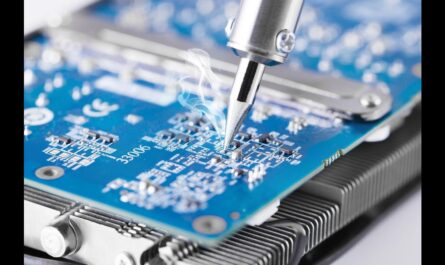What is a Biometric Card?
These cards rely on biometric sensors and matching algorithms to authenticate the cardholder. Some key characteristics of a biometric card include:
– Stores biometric data of the cardholder such as fingerprint minutiae, iris maps, or facial feature vectors. This data is unique to each individual.
– Contains a microchip similar to chips on credit/debit cards that can store biometric templates as well as other identification details.
– Uses contact or contactless biometric sensors to capture cardholder’s biometrics and match against the stored template for verification.
– Provides a more secure alternative to traditional ID cards that rely only on photographs, signatures or security codes for authentication.
– Can be used for a variety of identity verification purposes such as accessing bank accounts, logging into devices/networks, attending exams, airport boarding etc.
– Reduces the threat of identity theft, forgery and impersonation compared to conventional ID documents.
Benefits of Biometric Cards
Biometric cards offer significant advantages over traditional forms of identification:
Enhanced Security
By leveraging the uniqueness of human physiological or behavioral characteristics, Biometric Card make identity fraud and impersonation almost impossible. One cannot leave behind or forget their biometrics like they can an ID card.
Convenience
Biometric authentication happens instantly by just presenting one’s biometrics to the sensor. This removes the hassle of remembering passwords or swiping cards. It also allows for a hands-free experience.
Improved User Experience
As the verification is contactless, there is no chance of biometric samples getting worn out over time. Users no longer have to worry about illegible signatures or unclear photographs on cards.
Single Identity Proof
A biometric card can consolidate multiple types of IDs like driver’s license, passport, etc. into a single card. This reduces paperwork and the need to carry bulky wallets everywhere.
Accuracy and Reliability
Advanced biometric identification algorithms have extremely low error rates. False reject rates are also minimal with features like multimodal biometrics that require two or more biometrics for authentication.
Emerging Applications of Biometric Cards
With development of new biometric technologies, cards are finding diverse use cases:
Government IDs
Many countries have introduced biometric driving licenses and national IDs integrated with fingerprints, iris or facial biometrics. This consolidates citizen services and secures personal records.
Access Control
Organizations employ biometric staff cards for physical entry to buildings, login to devices on the network, and tracking employee attendance and work hours.
Travel and Border Control
Airlines are testing biometric boarding passes integrated with facial recognition. Several countries issue ePassports with embedded fingerprints. This expedites immigration procedures at airports.
Banking and Finance
Financial institutions worldwide are exploring contactless biometric ATM cards, credit cards, and digital wallets that validate cardholders using fingerprints or iris scans.
Exams and Education
Students write exams securely using biometric student id cards that verify their identity before permitting exam access. Impersonation is no longer possible.
Healthcare
Health biometric cards allow safe storage and access to patient medical records, digital health profiles, prescription details and insurance/Medicaid information.
Challenges and Future Potential
While biometric card technology holds tremendous promise, certain challenges must still be addressed:
– Interoperability standards between different systems from manufacturers are needed for cross-verification use cases spanning multiple organizations.
– Privacy and data protection laws will require robust encryption of sensitive biometric templates stored on cards as well as during transmission.
– Large-scale deployment requires further bringing down card production costs to make it economical for mass roll-out of government IDs.
– Biometric matching performance needs to be consistently high across different demographic populations with variable biometric quality.
If these challenges are overcome, biometric card capabilities are likely to be integrated into digital platforms as well. The future may see biometric profiles residing in secure digital wallets for remote identity proofing over the internet without the need for physical cards. With growing dependence on digital lives and identity theft, biometric cards are surely the identity verification system of tomorrow.
To summarize, biometric cards provide a powerful, secure and convenient solution for verifying identities in an era where online and offline credentials are continuously under threat. By leveraging the uniqueness of human biometrics, these cards have the potential to revolutionize how identity is established and services are accessed globally. Though challenges exist, advancements indicate that biometric cards will become ubiquitous across applications in the coming decade.
Note:
1. Source: Coherent Market Insights, Public sources, Desk research
2. We have leveraged AI tools to mine information and compile it



